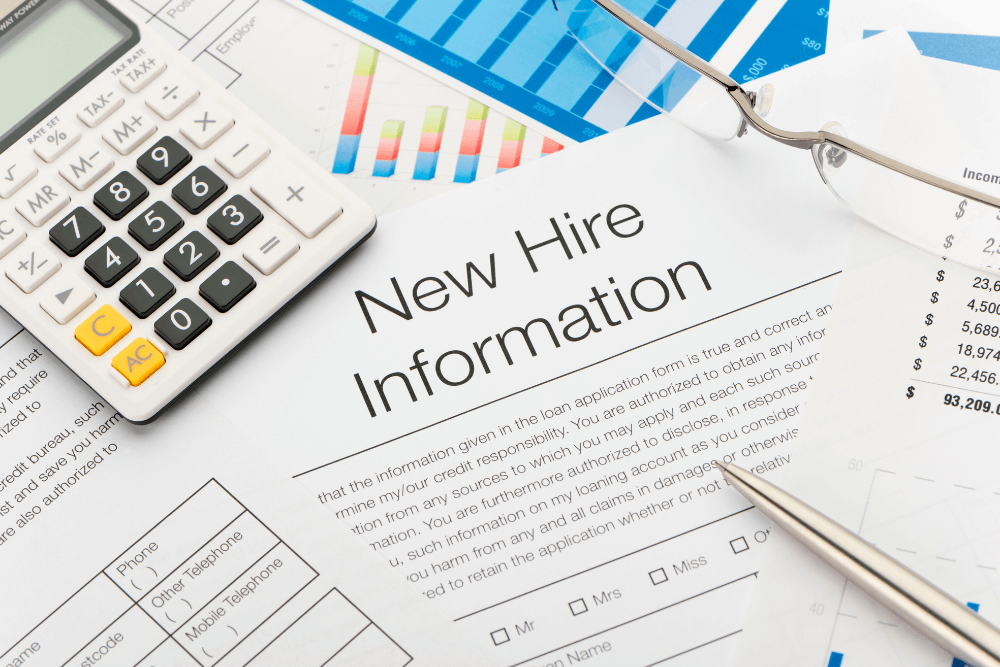Evan Pryor, Director of Sales at Tesseon
Cannabis is amongst the fastest growing industries in America, and it is also one of the most inexperienced. From the individual employee to the entire organization, the lack of commercial and regulatory knowledge can be a real burden for those facing it.
As an employer, one of the most common regulations you are responsible for is the reporting of any new hires to your state, or federal, governing body. Although new hire reporting can become quite recurrent, it is also critical to your business operations.
What is New Hire Reporting?
New Hire reporting is a process by which you, as an employer, report information on newly hired and rehired employees to a designated state agency shortly after the date of hire. As an employer, you play a key role in this important program by reporting all your newly hired employees to your state.
The Personal Responsibility and Work Opportunity Reconciliation Act (PRWORA) of 1996, known as welfare reform, requires all employers to report certain information on their newly hired employees to a designated state agency.
Who is considered a newly hired employee?
The law defines a “newly hired employee” as an employee who has not previously been employed by the employer; or was previously employed by the employer but has been separated from such prior employment and rehired.
Is the reporting process difficult?
The majority of the information you submit is already collected when your employee completes a W4 form. Still, the reporting process is an additional requirement, which may possibly add time and expense to your company’s operations. To ease the process, states are working together with employers, offering them a variety of reporting methods.
New Hire reporting is one of the many services we offer at Tesseon to reduce your burden and help you to stay in compliance.
Does New Hire reporting benefit employers?
A potential benefit to employers is the reduction and prevention of fraudulent unemployment and workers’ compensation payments. Timely receipt of New Hire data allows each state to cross-match this data against its active workers’ compensation and unemployment insurance claimant files to either stop or recover erroneous payments. States have saved millions of dollars of erroneous unemployment insurance payments because of these cross-matches.
What is done with the New Hire information?
States match New Hire reports against their child support records to locate parents, establish a child support order, or enforce an existing order. In addition to matching within a state, states transmit the New Hire reports to the National Directory of New Hires.
State agencies operating employment security (unemployment insurance) and workers’ compensation programs have access to their state New Hire information to detect and prevent erroneous benefit payments.
In addition, each state can conduct matches between its own New Hire database and other state programs to prevent unlawful or erroneous receipt of public assistance, including welfare, food stamps and Medicaid payments.
How is the data safeguarded after it is submitted?
Security and privacy of New Hire data are important issues for all those involved in this nationwide program. Federal law requires all states to establish safeguards for confidential information handled by the state agency.
All state data is transmitted over secure and dedicated lines to the National Directory of New Hire (NDNH). Federal law also requires that the Secretary of Health and Human Services (HHS) establish and implement safeguards to protect the integrity and security of information in the NDNH, and restrict access to and use of the information to authorized persons and for authorized purposes.
Where and how do companies send New Hire information?
New Hire reports should be sent to the State Directory of New Hire in the state where the employee works. Federal law identifies three methods for submitting New Hire information: first class mail, magnetic tapes, or electronically. For employer convenience, states offer additional options such as fax, email, phone, and website transmissions. Your state New Hire contact can provide you with instructions on where and how to send New Hire information.
Federal employers report New Hire data directly to the National Directory of New Hire.
What information must an employer report?
Federal law requires you to collect and report these seven data elements:
- Employee’s name
- Employee’s address
- Social Security number
- Date of hire (the date the employee first performs services for pay)
- Employer’s name
- Employer’s address
- Federal Employer Identification number (FEIN)
Some states require additional data, please check your state’s specific reporting requirements.
Are there penalties for failing to report New Hires?
States have the option of imposing civil monetary penalties for noncompliance. Federal law mandates that if a state chooses to impose a penalty on employers for failure to report, the fine may not exceed $25 per newly hired employee. If there is a conspiracy between the employer and employee not to report, that penalty may not exceed $500 per newly hired employee. States may also impose non-monetary civil penalties under state law for noncompliance.
Is New Hire reporting required for independent contractors?
Some states do require the reporting of independent contractors. However, federal law does not require it. Contact the person identified on the State New Hire Reporting Contacts and Program Information matrix for state-specific requirements.
How soon must I submit a report after hiring someone?
Federal law mandates that New Hires be reported within 20 days of the date of hire. However, states are given the option of establishing reporting time frames that may be shorter than 20 days. You must adhere to the reporting time frame of the state to which you report. Be sure to check with your state New Hire contact to learn your state’s requirements.
What form is used to send New Hire reports?
Reports must be made either on a copy of the W4 form or, at your option, an equivalent form developed by you. Some states have developed an alternate form for reporting, but its use is optional.
Options for multistate employers to report new hires?
If you are a multistate employer, you have two reporting options:
- Report newly hired employees to the states where they work, or
- Select one state where your employees work and report all your new hires to the selected state.
If you choose to report all new employees to one state (option B), you must:
- Register with HHS as a multistate employer
- Designate the state that you will report
- Submit your new hires electronically or by magnetic tape to the state you have chosen, no more than twice a month (12 to 16 days apart)
There are two ways to register as a multistate employer, either online or by downloading and filling out the designated paper form (PDF).
Once you complete the registration as a multistate employer, report employees to the state that you have chosen.
Need advice for your business?
At Tesseon we understand that your organization may need help getting things done. That is why we offer stand-alone services for areas that can be a challenge to any business. With our in-house expertise and award-winning support we can help you handle any business challenge that comes your way.



Follow NCIA
Newsletter
Facebook
Twitter
LinkedIn
Instagram
–